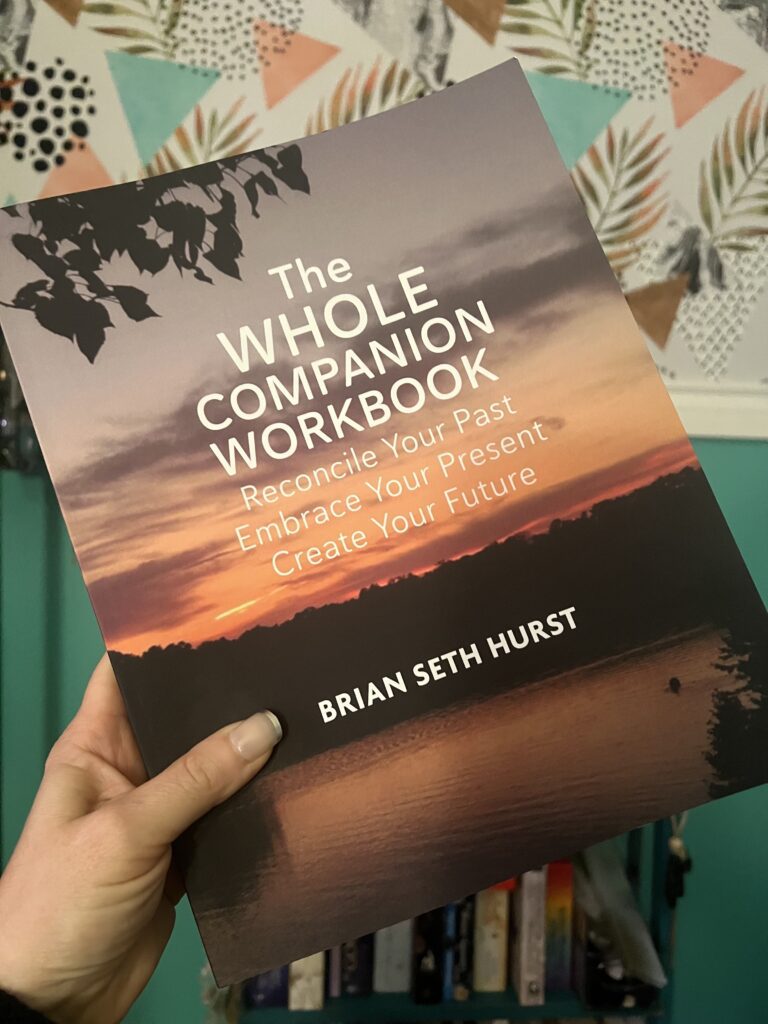How to Let Go of the Past and Create the Future You Want
When it comes to personal growth and self-discovery, the past can feel like an anchor, tethering us to outdated beliefs and unresolved emotions. But what if you could let go of those weights and chart a purposeful, empowered future? This is the core idea behind WHOLE and its companion workbook by Brian Seth Hurst. Hurst’s approach invites readers to reimagine their lives by examining their core beliefs, navigating emotional obstacles, and intentionally setting the stage for a brighter future.
Here, we explore Hurst’s insights and actionable tools for releasing emotional baggage and stepping into a life of authenticity and purpose.
Letting Go: It’s Not About Forgetting, It’s About Freedom
Letting go isn’t about erasing the past. It’s about recognizing how our early experiences and beliefs shape our present and assessing whether they still align with who we are today.
“If I suffered abuse as a child, I may conclude at the time that the world is not safe,” explains Hurst. “While this belief may have helped me survive, carrying it into adulthood can lead to isolation, mistrust, and difficulty forming meaningful connections.”
The first step? Awareness. By identifying the beliefs that have defined your life, you can consciously decide which ones to release. “The future becomes an opportunity to respond, rather than react,” says Hurst. “This shift is deep, complex, and often best explored in a safe, therapeutic environment.”
Resistance Is a Sign of Progress—Here’s Why
Self-discovery isn’t always a smooth ride. Resistance, Hurst emphasizes, is natural and often a precursor to breakthroughs. “The hard work of transformation can bring up grief, fear, and resistance,” he shares. “Yet, these challenges also present opportunities for growth.”
Support is key. Whether it’s friends, family, or a trusted therapist, surrounding yourself with people who create a safe and encouraging environment can make all the difference. Hurst also stresses the importance of self-compassion. “Be kind to yourself. Judgment only prolongs the process.”
Tools for Reflection: Rewriting the Rules of Your Life
Hurst’s WHOLE Companion Workbook offers a treasure trove of exercises designed to help readers confront limiting beliefs and create meaningful change. One standout activity is the “Belief Grid” from the chapter titled “Transformation Begins.”

In this exercise, participants list ten of the most influential people in their lives and reflect on the beliefs these individuals held about topics like family, money, and creativity. After letting it sit for a few days, they revisit the grid to identify which beliefs they’ve unconsciously adopted. Finally, they have the opportunity to rewrite those beliefs in a way that aligns with their authentic selves.
Hurst also advocates for journaling and meditation as daily practices. “Journaling helps get thoughts out of your head and feelings out of your body,” he explains. “Meditation, especially guided meditations, can help you find a style that works for you and supports your healing process.”
Stop the Mental Loop: Changing Your Inner Narrative
Breaking free from the grip of past experiences starts with acknowledging your feelings. “Label them, feel them, and know they’re valid,” Hurst advises. “From there, observe the internal dialogue you’re having with yourself. Is it supportive or stuck on repeat?”
Awareness is the key to interrupting negative loops. Hurst shares that many of our inner narratives stem from voices we internalized during childhood—parents, teachers, or authority figures. “Once you’re aware of these patterns, you can begin to rewrite the script,” he says.
Forgiveness: The Secret Ingredient to Moving On
Forgiveness—of yourself and others—is a cornerstone of letting go. “Forgiveness isn’t about condoning what happened,” Hurst clarifies. “It’s about releasing the anger and hurt that weigh you down. It’s an act of self-love.”
One of Hurst’s recommended techniques is writing a letter you’ll never send. “Get everything out,” he advises. “Then burn it as a symbolic gesture of release. If it feels impossible to forgive, partner with a mental health professional who can guide you through the process.”
Purpose Is Your North Star—How to Find It
Once you’ve begun releasing the past, the next step is setting intentions for the future. Hurst emphasizes that purpose is not what you do but the context for what you do. “My purpose is to connect and engage authentically and inspire,” he shares. “Whether I’m writing, coaching, or performing, I’m on purpose.”
For readers overwhelmed by the idea of creating a new future, Hurst recommends starting small. “The journey of a thousand miles begins with a single step,” he says, quoting Lao Tzu. Daily journaling, exploring your values, and seeking inspiration from books and biographies are simple but impactful starting points.
Three Game-Changing Steps You Can Take Right Now
- Practice Self-Compassion: Recognize that self-discovery is an act of self-love. Approach it with kindness and without judgment.
- Commit to Growth: Set up a support system and remind yourself that personal transformation is an expedition—take breaks when needed but stay committed.
- Focus on Your Values: Think about how you want to feel and the type of people you want to surround yourself with, rather than just material goals.
The Ripple Effect of Transformation
As Hurst beautifully puts it, “Be inspired, be grateful, and be love.” Letting go of the past isn’t about erasing what’s happened; it’s about using those experiences to create a more intentional and fulfilling future. By doing the work of self-discovery, you’re not only transforming your own life but also inspiring and uplifting those around you. It’s a ripple effect—and it all starts with one step.